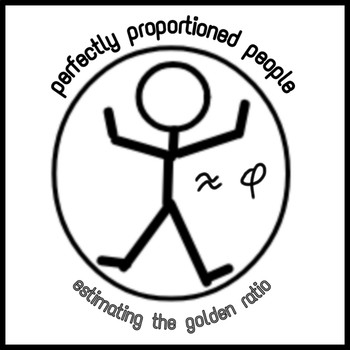People Perfectly in Proportion: The Golden Ratio
- Zip
Description
Zip File includes - PDF and editable document
Lesson Setup: This lesson can be used for students at all developmental levels. Measuring with a ruler, error analysis, and proportional thinking are a few of the skills this lesson practices. Groups can be made based upon skill requirements. Lower functioning students can perform measurements and watch higher performing students do calculations. Result could also be presented by a possible third student - if you want to do trios as opposed to pairs. Results could be extended to entire classroom sets if you project/put on the board each of the tables. Kind of like a group - think, pair, share.
Lesson Scope: Remember to introduce the concept of the golden ratio before doing this activity. This lesson may self contained or part of a unit on proportionality. It can even be used as a data modeling project. We can compare graphically the independent variable, leg length and the dependent variable, height. Running a linear regression on that data, we generate a function and compare the slope of that function with the average values of our ratios below.
Groups:
2 - Data Collector, Data Computer, Both Present
3 - Data Collector, Data Computer, Data Presenter
Big Questions:
What is the golden ratio?
Are our bodies proportional to themselves?
Are our bodies proportional to each other’s?
Are we in golden ratio -individually? on average?
Can we accurately make predictions about our height based upon the measurements of our arms and legs?
Materials:
Tape Measure
Tables and reflections - printed or digital
Printouts of Pages 2-3 of this document
Pencil




